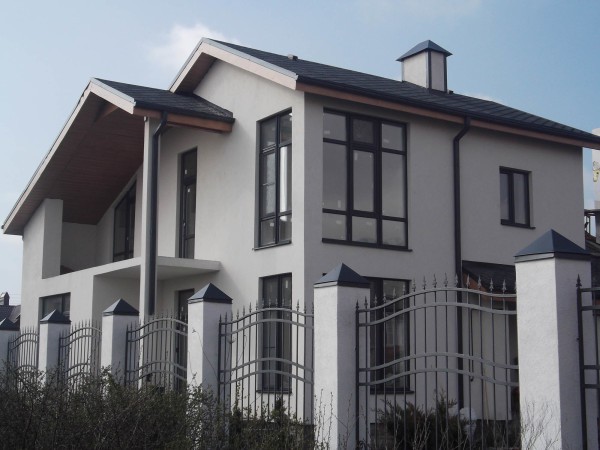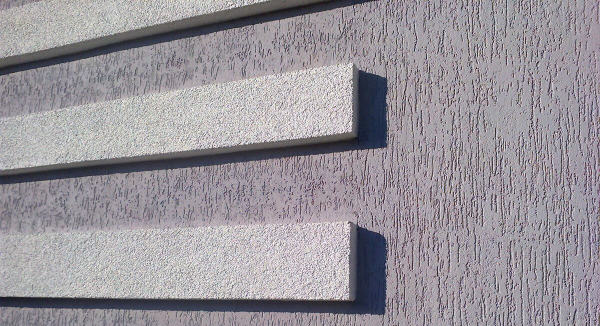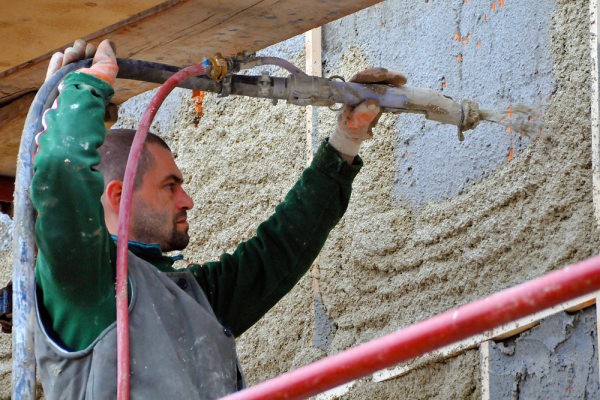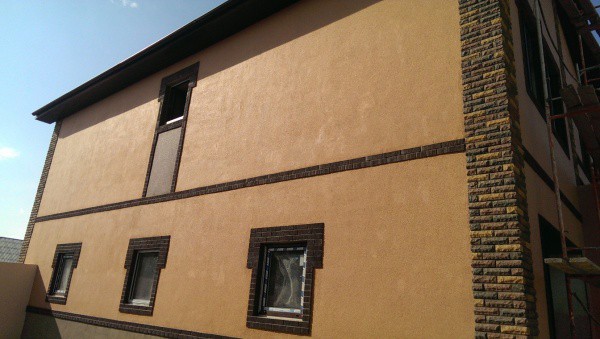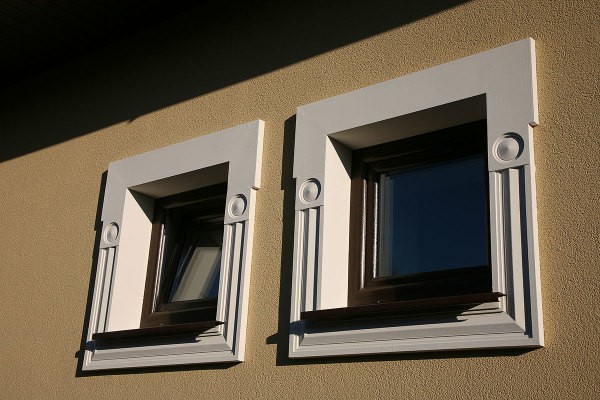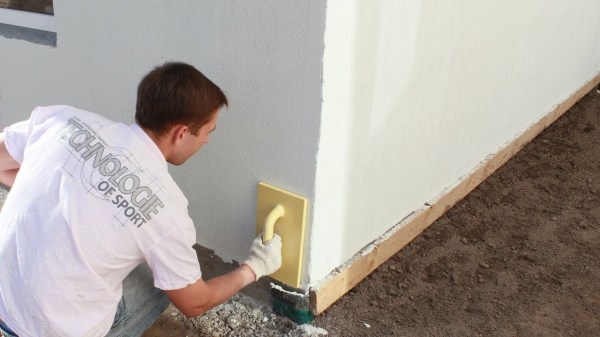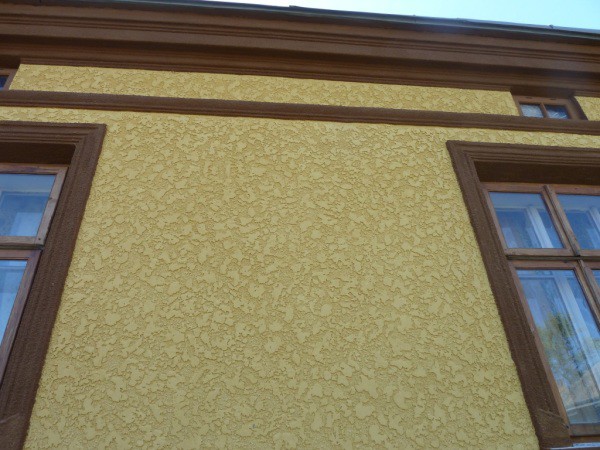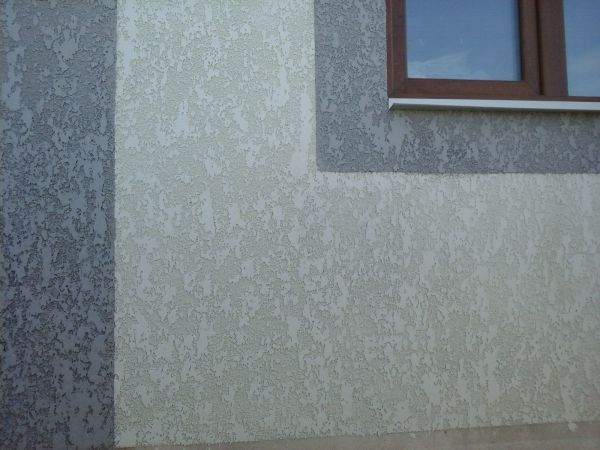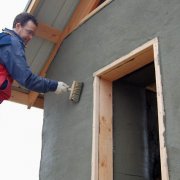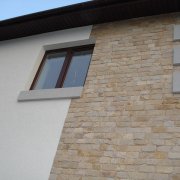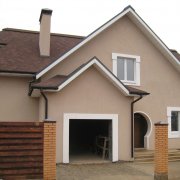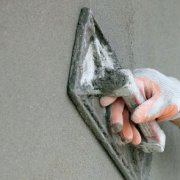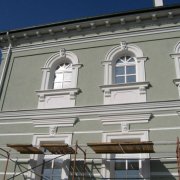Facade decorative plaster: how to finish a house
Modern facade decorative plasters allow once - and for many years to come, to solve the issue of exterior decoration of the building. Together with a leveling screed, without which it is rarely possible to do without it, it, like leather, protects the supporting structures from getting wet, solar activity, subzero temperatures, and even mechanical effects.
Through the video in this article, as well as its theoretical part, we will tell you what decorative plasters for factory-made facades are present on the domestic market of finishing materials. You will learn how they are characterized, how they differ, what visual effects are designed for, and what tool they are applied. In general, irreplaceable information for those who have to do home decoration on their own.
The content of the article
Stucco decoration for the facade
In the arsenal of each manufacturer, offering the consumer decorative facade plasters, there are at least five types of mixtures, which are distinguished by a bonding basis. They are supplied as ready-to-use formulations or as dry mixes that need only to be diluted with water.
The manufacturer's instructions regulate the time it takes for the solution to adapt, indicates the setting time and final solidification. A man can only acquire the necessary tool, and follow these recommendations.
Acrylic Compounds
In modern plasters, especially facade plasters, which must be resistant to moisture and other influences, polymer resins are used instead of mineral binders. The characteristics of the stucco mixture depend on their properties - and, accordingly, their price.
So:
- Relatively inexpensive and most popular, is exterior decorative plaster based on acrylic copolymers. In principle, acrylic mixtures are universal, and are used not only for the decoration of facades, but also indoors. But when they are intended for internal work, they can be designed to receive more diverse effects.
- Facade options are most often divided into structural and mosaic mixtures. When using structural compounds, the decorative effect (bark beetle, lamb (see Plaster front Lamb - a practical "clothing" for your home)) is achieved due to the filler of a certain size, which, under the mechanical influence of the tool on the screed, moves from the spot, leaving characteristic traces.
- Structural mixtures are often sold ready-made. They not only do not need to be diluted with water, but also do not need to be tinted - just choose your favorite shade. If a bark beetle pattern can only be made by hand, using a stainless trowel, then plasters with the “grits” effect can also be applied by machine, as we see in the photo below.
- The effect of mosaic mixtures is also achieved through filler, only here is used colored marble chips, which densely covers the surface being trimmed, and is itself a decor. It should be noted that of all types of plastersused for exterior walls, mosaic coating has the greatest mechanical strength.
Decorative plaster for facades, made on the basis of acrylic resins, is applied to smooth concrete, or leveled with a lime-cement mortar base. Such compositions are very flexible, easy to apply and adhere perfectly to the surface, preserve the color of the coating for a long time.
Silicone and silicate plasters
Silicone is distinguished by excellent hydrophobic properties, and decorative facade plaster based on it, forms a durable and water-repellent coating. Unlike acrylic compounds, silicone plasters pass steam well.
They are used not only for finishing mineral substrates (concrete, cement plaster), but they are also used in seamless wall insulation systems - that is, they are plastered with mineral wool and polystyrene.
So:
- Range silicone plasters somewhat poorer than acrylic. Mosaic compositions are not provided here at all - there are only structural ones for manual application: small and large “groats”, and all the same “bark beetle”.
- Thanks to their absolute waterproofness, silicone coatings are self-cleaning., the water just rolls off them, and after the rain the walls look updated. Such plaster is applied easily, and in general - combines all the positive qualities of both acrylic and mineral compositions, which also will not be left without attention.
- In the meantime, let's say a few words about silicate plasters, which are also called silicon. They are based on aqueous solutions of sodium silicate or potassium, which is commonly called liquid glass. The rest is mineral filler, hardening control additives, pigments.
- This type of plaster is ideal for walls of gas silicate blocks, silicate brick. But if we take into account that these surfaces are always curved, and must be leveled, then a lime-cement plaster screed is usually obtained as a base.
- Since silicate plasters are characterized by an alkaline reaction, which is not so safe for people working with them, many manufacturers reduce it by introducing silicone resin into the composition. Such plasters are called polysilicate.
They have incredible resistance to aggressive acid rain, ultraviolet, subzero temperatures. But note that compounds with the addition of silicone are slightly less resistant to biological damage than pure silicate, in which the same alkaline reaction is a defense.
Mineral plasters
This type of plaster got its name because there are no polymer binders in its composition, but there are substances of mineral origin: lime and white cement. As a filler, not only sand is used, but also granules of marble, mica, sandstone, antarcite, and even ceramic chips.
- If the manufacturer wants to give the material heat-saving properties, then perlite granules and foam glass balls can be used as filler. Such plasters are called warm, and are used not only for decorating facades, but also indoors. They are applied to any substrate - including those used in warm plaster systems.
- Unlike polymer and silicate compositions, mineral plasters released in dry form, and shut with water before use. They are not tinted at the production site, but are offered to the consumer either a white color, which can be tinted independently, or a gray color, which is used for painting. This makes it possible to create multi-color coatings that look very interesting on the facade.
- Consider, for example, what constitutes decorative facade plaster such as bollix mpka 15dm. This is a dry mixture packaged in 25kg bags.In fact, this is the same structural plaster with the effect of “croup”, which was mentioned above, only on the basis of another binder. Granulation of the filler in it does not exceed one and a half millimeters, the mixture is consumed on average 3 kg / m2.
- The requirements for applying plaster are general: the base, which must be dry, is thoroughly cleaned or leveled, and if necessary, it is also strengthened with an appropriate composition. The same manufacturer offers both leveling mixtures and adhesive putty, which provides perfect adhesion, and a primer.
- Preparation of the solution should be carried out in strict accordance with the recommendations given on the package. Stir with a mixer at low speeds, give the mass ten minutes to rest, and mix again.
Each package must be diluted in the same proportions, and in no case do not introduce any extraneous additives there. When the screed is treated with a tool until the desired effect is obtained, it is allowed to dry, after which the coating is primed - that is, prepared for painting.
Manufacturer's Recommendations
No matter how good the decorative plaster for the facade itself is, the quality of the finished coating depends on many other nuances. For example, manufacturers especially note that on such bases as concrete, cement and lime-cement leveling screeds, decorative plastering can be done no earlier than a month after their implementation.
Note! When working with decorative plasters, certain conditions must be observed. Work must be done in dry and calm weather, avoiding direct sunlight. The ideal air temperature is from +5 to +25 degrees, since lower temperatures slow down the setting and hardening of the screed.
So:
- As part of the preparation of the surface, it should be treated with a primer based on the same substance as the plaster. Moreover, the primers offered by the manufacturer are tinted in the same shades. Under the mosaic coating, before priming, a special adhesive composition is also applied, which is usually purchased complete with the main composition.
- Even when the decorative plaster for facades is ready for use, after opening the packaging, it must be mixed at a low speed with a mixer. This is necessary to saturate the mass with oxygen - and in addition, you need to get a homogeneous consistency, and the filler is donkey on the bottom.
- In working with structural plaster use such tools. Put the mass with a long spatula, apply and level with a Venetian trowel - both tools are made of stainless steel. Grout to get a picture, produce a plastic grater. Mosaic coatings are performed similarly, and only by hand.
As for the structural mixtures intended for machine application, they should have a slightly more liquid consistency, and they are slightly diluted with water. It is added no more than 300 ml per 30 kg of plaster. The solution is applied in one or two layers, using a nozzle in accordance with the size of the filler.
"Fur coat" front
A beautiful relief on the plaster can be obtained not only due to the size of the filler, but also thanks to the excellent ownership of the tool. We are talking about such a popular covering for facades, which is called a fur coat. This effect can be obtained even using ordinary cement mortar - only a fur coat in this case will turn gray, in the color of cement.
- If for this purpose we use ready-made mineral or acrylic structural plaster with the effect of “croup”, then the fur coat will turn out to be colored. At the same time, the relief on the coating may differ slightly, which depends on the variety and fraction of the filler - the larger it is, the more voluminous the resulting picture.
- The type of filler affects not only the final result, but also the cost of the material. It is clear that marble is more expensive than sandstone or mica, therefore plasters with marble chips cost an order of magnitude more. To obtain the effect of a fur coat, two layers are applied to the surface. The first, as expected, is well smoothed, and, without waiting for it to set, randomly apply small tubercles of the solution.
- When it dries, the coating is lightly sanded, dust removed, and painted or coated with a protective compound. If the stucco tubercles of plaster are lightly pressed down with a trowel, you get the effect that is presented in the example above - it is called a grated coat, and resembles the surface of a doodle.
- Purchased decorative plaster is not cheap. If you make a gray coat of ordinary cement mortar, it turns out much more economical. It is not as plastic as the compositions from the manufacturer, and it is not applied at all: a solution that is more liquid in consistency is sprayed onto the wall through a frame with a stretched mesh.
- The larger the cells, the more voluminous tubercles form on the plaster. An excellent relief is obtained when applying the solution using a hopper. In fact, a fur coat is just one of many options for reliefs that can be done with a tool, or even improvised items.
- This effect is the only one that can be obtained on simple stucco made on gray cement. The problem is that it is neither possible to color nor paint normally - no matter how you try, the gray color will still be visible. If you wish, you can, of course, make a solution on white cement, plasticize it with lime test, and enchant.
But in reality it is very difficult to ensure that in each batch there are the same proportions of ingredients, and the colors should be measured up to the drop - otherwise the shades will not be identical. So whatever you say, if you want to get a beautiful color coating - you have to buy ready-made plaster from the manufacturer.
